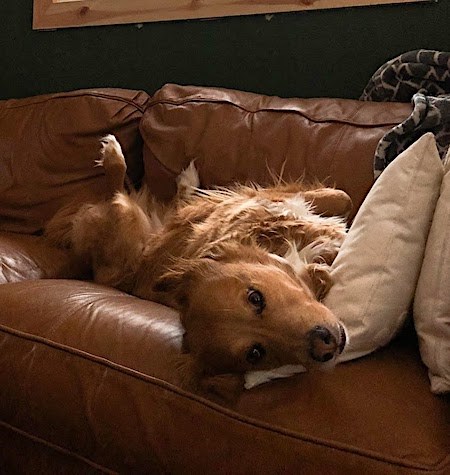Pets are prohibited on ALL Mount Rainier National Park trails and wilderness areas.Why can't I have my pet on trails?
Regulations for pet owners
** The Pacific Crest Trail (PCT) on the eastern border of the park is the only exception. Dogs on a leash no longer than 6 feet are permitted on the Pacific Crest Trail. A portion of the Pacific Crest Trail is used to form the Naches Peak Loop Trail near Tipsoo Lake. Dogs are allowed on the Pacific Crest Trail portion of the loop but are NOT allowed on the non-PCT sections of the Naches Peak Loop Trail within the park. Where is it okay to take your pet?

NPS/C. Meleedy Photo Should I bring my pet?Ultimately, bringing your pet to the park is your choice. But in many cases, there are more risks than rewards to both your pet and to wildlife. Wildlife have been known to injure dogs. Deer, bears, and mountain lions can be protective of young or defensive of territories and may attack pets. Pet Preparedness
Below are a few pet-friendly options for enjoying the park. Service AnimalsHow is “service animal” definedService animals are defined as dogs that are individually trained to do work or perform tasks for people with disabilities. Examples of such work or tasks include guiding people who are blind, alerting people who are deaf, pulling a wheelchair, alerting and protecting a person who is having a seizure, reminding a person with mental illness to take prescribed medications, calming a person with Post Traumatic Stress Disorder (PTSD) during an anxiety attack, or performing other duties. Service animals are working animals, not pets. The work or task a dog has been trained to provide must be directly related to the person's disability. Dogs whose sole function is to provide comfort or emotional support do not qualify as service animals under the Americans with Disability Act (ADA).
This definition does not affect or limit the broader definition of "assistance animal" under the Fair Housing Act or the broader definition of "service animal" under the Air Carrier Access Act. Some State and local laws also define service animal more broadly than the ADA does. Information about such laws can be obtained from the State attorney general's office. Where Service Animals Are AllowedUnder the ADA, State and local governments, businesses, and nonprofit organizations that serve the public generally must allow service animals to accompany people with disabilities in all areas of the facility where the public is normally allowed to go. Service Animals Must Be Under ControlUnder the ADA, service animals must be harnessed, leashed, or tethered, unless these devices interfere with the service animal's work or the individual's disability prevents using these devices. In that case, the individual must maintain control of the animal through voice, signal, or other effective controls. |
Last updated: January 24, 2025
